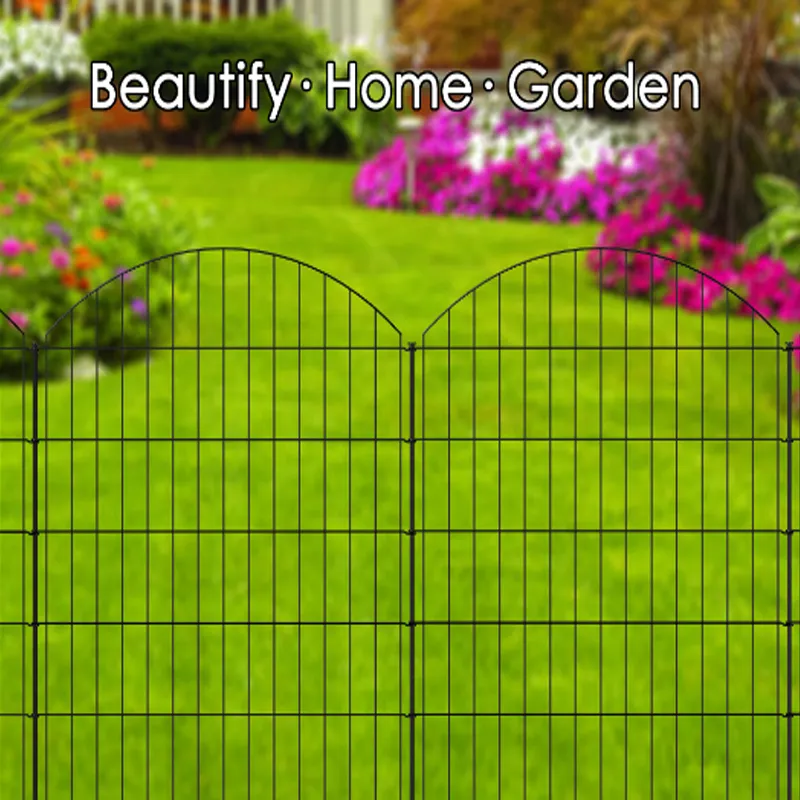Setting Fence Posts in Sandy Soil A Comprehensive Guide
When it comes to maintaining boundaries or creating an aesthetically pleasing landscape, erecting a fence can be one of the most fulfilling DIY projects. However, setting fence posts in sandy soil presents unique challenges that require careful planning and execution. This guide will provide you with practical tips to ensure your fence remains sturdy and functional despite the unyielding characteristics of sand.
Understanding Sandy Soil
Sandy soil, characterized by its coarse texture, drains water quickly, which can lead to instability for structures like fence posts. Unlike clay or loam, sandy soil lacks cohesion and may not hold posts firmly in place. Due to these properties, it's crucial to adopt specific strategies when setting fence posts.
Choosing the Right Fence Posts
Selecting the proper type of fence post is the first step to ensure durability and stability. While wooden posts are common, they may rot faster in sandy conditions if not treated properly. Opting for treated wood, vinyl or metal posts can enhance longevity. Metal posts, in particular, are resistant to the elements, making them an excellent choice for sandy environments.
Tools and Materials Needed
Before beginning the project, gather the necessary tools and materials - Fence posts (wood, vinyl or metal) - Post hole digger or auger - Gravel or crushed stone - Quick-setting concrete or premium-grade gravel - Level - Measuring tape - String line or stakes to mark the fence line - Water (if using concrete)
Preparing the Site
Preparation is key to a successful installation. Start by marking the intended fence line with a string line and stakes. Measure the distance between posts according to the type of fence you're installing, generally 6 to 8 feet apart.
Using a post hole digger or auger, dig holes that are at least one-third the length of the post in depth, which provides the right stability
. In sandy soil, deeper holes can help anchor the post better.setting fence posts in sandy soil

Setting the Posts
With the holes prepared, it’s time to set the posts. Here’s a step-by-step guide
1. Place the Post Set the post into the hole, ensuring it’s upright. Use a level to check vertical alignment.
2. Add Gravel To provide better drainage and stabilization, fill the bottom of the hole with several inches of gravel or crushed stone before inserting the post. This will help anchor the post while allowing water to drain away, limiting the chances of deterioration.
3. Fill with Concrete (Optional) For additional support, especially in cooler areas where frost may be a concern, pour quick-setting concrete around the post. Follow the manufacturer’s instructions for mixing. If you choose gravel instead of concrete, fill the hole to approximately 2-3 inches above ground level.
4. Backfill and Compact Carefully backfill the hole with sand or topsoil around the post. Compact the soil as you fill to reduce air pockets, promoting better stability.
5. Check Alignment Again Before the concrete cures or the soil settles, double-check the post’s alignment. Adjust if necessary to ensure that your fence will be straight.
Allowing for Curing Time
If you used concrete, be sure to allow it to cure for the recommended time before attaching the fence panels or wire. This may range from a few hours to several days, depending on the type of concrete.
Conclusion
Setting fence posts in sandy soil may come with challenges, but with the right preparation and techniques, you can achieve a stable and lasting fence. Remember to choose durable materials, provide adequate drainage, and ensure proper alignment to create a boundary that not only protects your property but also enhances its beauty. Whether for privacy, security, or simple aesthetics, your sturdy fence will be a testament to your hard work and dedication.
















